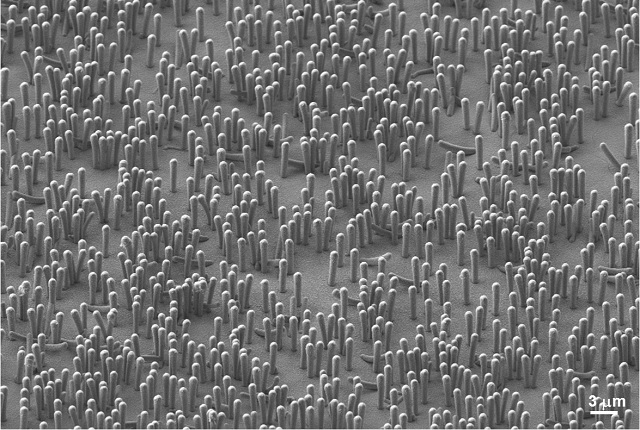 A "nanoforest" of nanowire lithium-ion batteries. Image Credit: Oleshko/NIST
A "nanoforest" of nanowire lithium-ion batteries. Image Credit: Oleshko/NIST
The researchers developed multi-layered lithium-ion batteries by forming a continuous layer of various materials covered with long silicon wire. The small tree-like battery structure is attached to silicon wafers at bottom and grouped together to form 'nanoforests'.
The layered structure of the battery enables it to collect, store and discharge electric power. These benefits make the battery suitable for charging autonomous microelectromechanical machines, which have potential applications in several fields.
The development of a multi-layered battery structure with varying parameters such as thickness and morphology, requires an innovative way of designing each layer in order to improve the performance of the battery. Traditional investigation techniques, such as transmission electron microscopy (TEM), lack the ability to provide detailed information.
As a result, the research team developed a new imaging technique - multimode scanning TEM which illuminates the battery using electrons at a wide range of scattering angles.
The researchers obtained a clear picture of the battery’s internal structure information at the nanoscale level using electron detectors.
This breakthrough technology paves way for the researchers to create new methods for developing miniature batteries.
Vladimir Oleshko, one of the team members said that MEMS manufacturers could benefit from the batteries and the technique developed to analyse them. He added that this approach is also useful in the field of additive manufacturing where devices are non-invasively produced by layered materials.